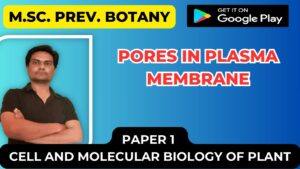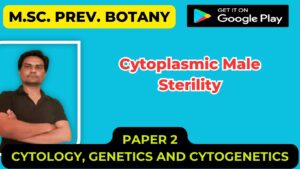![]()
GENOME ORGANIZATION
- The genetic evidence indicates that mitochondria contain genes distinct from those located in the nucleus.
- Mitochondrial DNA was identified on the basis of its unique density.
- The amount of mitochondrial DNA found in eukaryotic cells varies.
- In animal mitochondrial DNA-typically accounts for 0.1 to 1.0 percent of a cells total DNA content in Yeast its value is high as 15%.
- The DNA located in mitochondria exhibits several features that distinguish it from nuclear DNA.
- One major difference is that mtDNA lacks histone and hence not packaged into nucleosomes.

- Mt DNA is typically Circular.
- The mitochondrial DNA circles of animals cells are the smallest about 15,000-20,000 bp in size.
- Mt DNA of fungi and protists are larger i.e. 20,000-1,00,000bp and plant mtDNA are largest ranging from 2,00,000bp to million bp in length.
- One to the tendency of large circular DNA to break during isolation many reports suggest that plant mt DNA is linear rather than circular. Few unicellular prokaryotes such as Paramecium have linear mol of mt DNA’s.
- In animals, fungi and protists mitochondrial contains few dozens to several 100’s mol of DNA, all of which are identical.
- The first direct evidence for an association between cytoplasmic inherited tracts and mt DNA was produced by Piotr Solnimski et.al. they demonstrated that mt DNA obtained from yeast bearing petite mutation has a different density than the mt DNA of normal yeast Petites is induced by treatment with ethidium bromide as a model system.
- These studies revealed that ethidium bromide stimulates the breakdown of mt DNA and inhibits mt DNA replication.
- Long term exposure to ethidium bromide causes the complete destruction of mt DNA, but if treatment is stopped before all the DNA has been degraded, the remaining DNA resumes replication until the total context of mt DNA reaches normal levels.
- But the new mt DNA is grossly abnormal containing few of its sequence present in the original mt DNA. The presence of abnormal mt DNA in petite yeast strongly argues that this DNA is responsible for the abnormalities in mitochondrial structure and respiratory activity observed in petites mutants.













